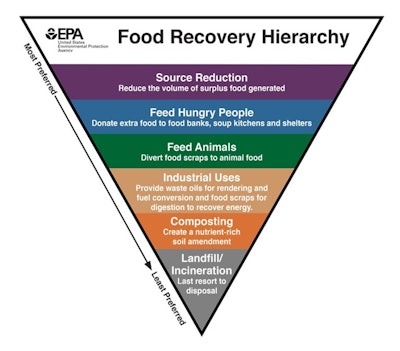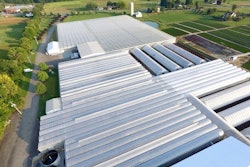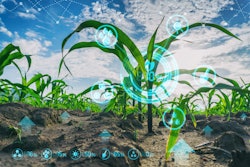
Food waste is an inevitable part of the food system, but the extent to which it exists in this country and the world at large is the result of unconscious design and vulnerable supply chains struggling to manage uncertainty. Globally, one-third of all food produced is wasted, but in the United States, that number is even higher.
Grocery retailers, restaurants and foodservice companies alone waste roughly 25 million tons of food valued at $57 billion per year, accounting for roughly 40% of U.S. food waste by tonnage. In the institutional food service sector, for instance, 4-10% of the food purchased is typically wasted before it can be sold and served to consumers. For restaurants, 2 pounds of wasted food is generated for every $100 in sales.
Food is the single largest line item on a food business’ profit and loss statement, yet its waste is largely unaddressed, let alone managed. When put into perspective alongside the amount of time, energy and resources that go into its production, it becomes clear that food waste is bad business, and there exists an enticingly lucrative opportunity in fixing it.
The ReFED Roadmap to Reduce U.S. Food Waste by 20 Percent identified $1.9 billion in annual business profit potential from food waste reduction strategies. In context, for every $1 invested in food loss and waste reduction, the average business receives a $14 return. Thanks to automation in innovative technology, that return has been evaluated as high as $20, and continues to grow as the need becomes more realized and the market for solutions grows.
Food waste thrives on uncertainty, and the Coronavirus disease (COVID-19) has made that a norm. From daily operations to consumer demand, nothing is certain except the fact that we need to use this moment as an opportunity to build a more resilient food system. As we continue to reckon with “business as usual,” reducing food waste should be a key strategy to increase supply chain resiliency and better manage existing and future supply risk.
Employ waste tracking and analytics
Waste tracking and analytics present the most economically beneficial and high-impact solution to food waste. Waste patterns exist, but when we fail to address and understand them, we operate from a place of uncertainty. By taking a deeper dive into not just what is being wasted, but why, businesses can better adjust supply to meet demand and strategically optimize operations to maximize profitability.
Many businesses employ some form of waste tracking to manage inventory, but the real power lies in analyzing that waste. Automated solutions can identify patterns in low-moving and high wastage items and calculate the effect that waste has on individual item profitability. With this insight, operators can more intentionally plan menu offerings and be more strategic about ordering product. By gleaning insight to kitchen behavior, inefficiencies can be pinpointed and addressed.
Waste tracking influences every step of the supply chain and redesigns it to be more conscious and efficient. Given the far-reaching effects of food waste, investing in its prevention becomes a promising way to make the food system more resilient and business operations more purposeful.
The power of prevention
Waste tracking and analytics, as a means of source reduction, gives operators the tools to prevent food waste from ever happening in the first place.
Source reduction is the most economic, environmental and socially beneficial mode of food waste management, but the term is far less recognizable than its recovery (e.g., feeding people and animals) and recycling (e.g., composting) counterparts. While both play important roles in an overarching strategy to tackle food waste, reduction must be prioritized to drive true impact. In terms of cost, source reduction creates three times the societal net economic value of recovery and recycling combined.
The focus on efforts against food waste is not evenly spread, nor strategically employed due to the lack of awareness around best practices. Until recently, source reduction was a lofty dream, held up by the steep initial investment and reality of difficult staff compliance and training. Today, technology can overcome those barriers to make source reduction a seamless part of the New Normal. Recent advancements have made deep learning, low-labor options affordable for a wider marketplace and expands the opportunity to create change.
Source reduction cuts food waste in half and operates as a top-down solution. When paired with recovery and recycling tactics, a future of zero food waste is possible, but when omitted, leaves those tactics largely overwhelmed and inefficient.
The bottom line is that the food system unconsciously creates too much food waste. Until we remedy those inefficiencies and better manage production, diversion is not enough. We must take action to reduce at the source.
A call to action
Tackling food waste is the most actionable solution to climate change, and given the breakdown of waste statistics and influence of the industry, food businesses are in a unique position to dramatically alter the trajectory of our world. Food waste accounts for 8% of global greenhouse gas emissions, and the result of addressing that would create a dramatic and impactful ripple effect.
As the conversation around food waste continues to grow, businesses should strive to get ahead of the curve. Those who act now will be rewarded and serve as an example to ones who follow. Getting started is easy and building on existing practices is important.
The EPA offers free assessment tools and a growing number of innovative solutions provide automated waste tracking technology. Food waste is an existential threat and one of our most illogical global issues given the number of hungry people and level of unnecessary environmental degradation that comes as a byproduct. Each and every one of us has a role to play, and when doing the right thing also dramatically improves operational efficiency and has the power to sustainably maximize profits, the question becomes – why not?


















